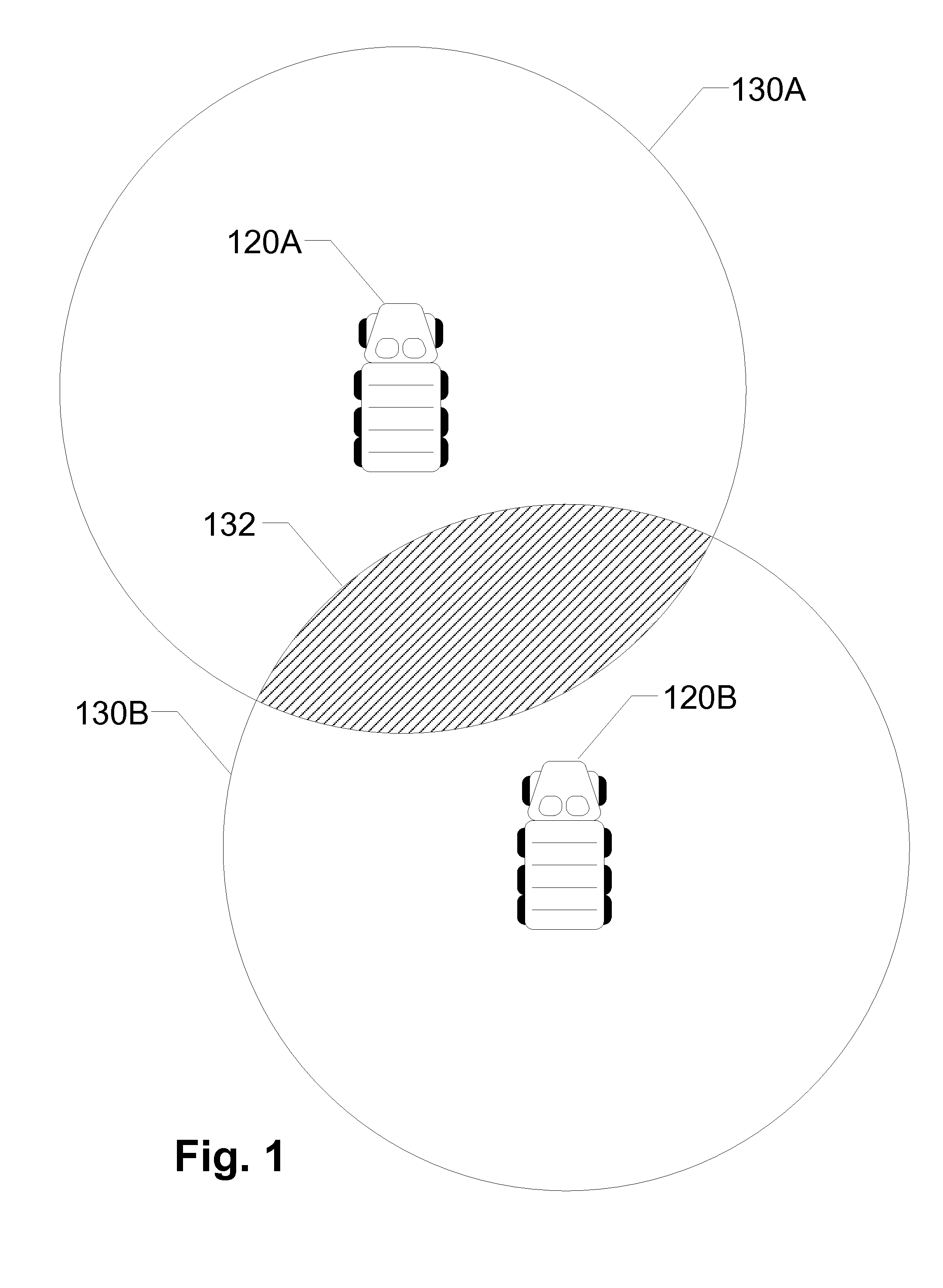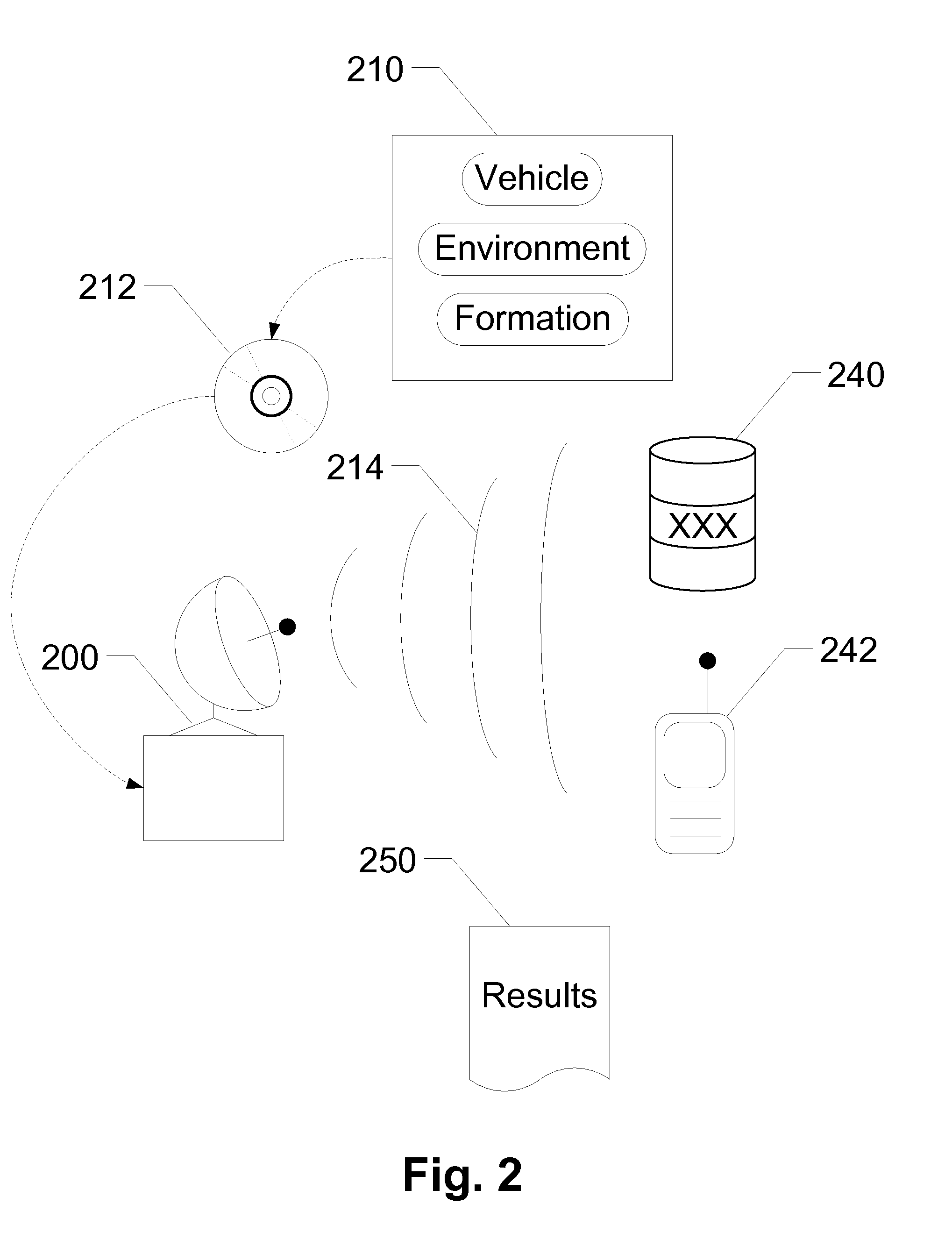Systems and Methods for Protection from Explosive Devices
a technology of electromagnetic jammer and system, applied in the field of electromagnetic jammer system testing and rapid fielding, can solve the problems of difficult to envision what kind of bomb will be used next and how to protect against, and the jamming is not without limitations, so as to achieve the effect of minimizing destructive spaces
- Summary
- Abstract
- Description
- Claims
- Application Information
AI Technical Summary
Benefits of technology
Problems solved by technology
Method used
Image
Examples
Embodiment Construction
[0027]The present invention presents systems and methods for reproducing and testing a simulation of electromagnetic propagation of multiple Radio Frequency (RF) jammers in an environment to determine the effectiveness of the jammer configuration. In exemplary embodiments of the present invention a multi-jammer simulator renders the electromagnetic propagation of a multiple jammer scenario including multiple RF jammers onboard vehicles traveling through the environment, and records a multi-waveform output of the multiple jammer scenario to a recordable medium. A multi-waveform generator reads the multi-waveform output from the recordable medium and physically reproduces a plurality of waveforms consistent with the multi-waveform output. The plurality of waveforms is substantially similar to a physical reproduction of the multiple jammer scenario. An RF receiver, placed within a range of effectiveness of the multi-waveform generator, attempts to receive a signal from an RF transmitte...
PUM
 Login to View More
Login to View More Abstract
Description
Claims
Application Information
 Login to View More
Login to View More - R&D
- Intellectual Property
- Life Sciences
- Materials
- Tech Scout
- Unparalleled Data Quality
- Higher Quality Content
- 60% Fewer Hallucinations
Browse by: Latest US Patents, China's latest patents, Technical Efficacy Thesaurus, Application Domain, Technology Topic, Popular Technical Reports.
© 2025 PatSnap. All rights reserved.Legal|Privacy policy|Modern Slavery Act Transparency Statement|Sitemap|About US| Contact US: help@patsnap.com



